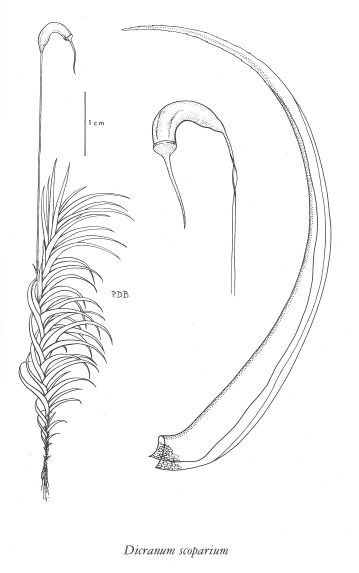E-Flora BC: Electronic Atlas of the Flora of British Columbia
Dicranum scoparium Hedw.
broom-moss (dicranum moss) Dicranaceae Species Account Author: Wilf Schofield Extracted from Some Common Mosses of British Columbia Introduction to the Bryophytes of BC
|
|||||||||||||
